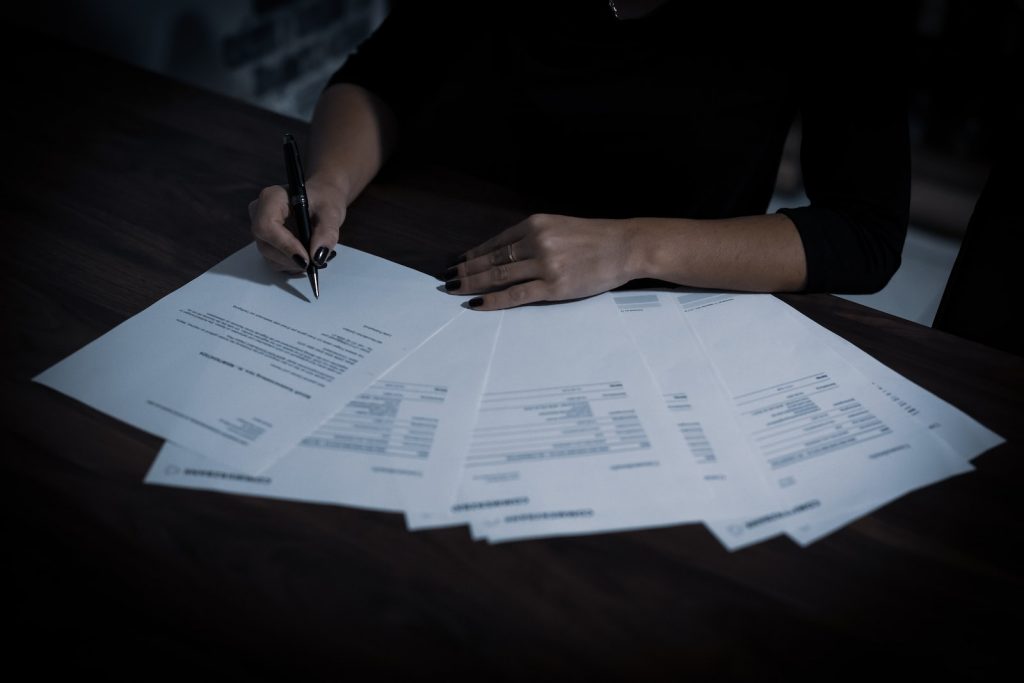Introduction
In India, the following persons can file a patent application under Section 6 (1) of the Patent Act 1970.
- The true and first inventor
- Assignee of the first and true inventor
- Legal representative in case of the deceased inventor
In order to gain patent rights, one has to be ready with relevant documents and be quick in action. The following are some major documents to be prepared by the inventor.

Laboratory Notebook
Also known as ‘Inventor’s notebook’, ‘Log book’ or ‘Journal’. In these books, all the information about how the invention came into existence is recorded. It contains the invention process, ideas, experiments, results and observations. It is not a legal document but it helps in establishing the dates of conception and reduction to practice (reduction to practice is to bring the idea into physical fruition).
It helps in dealing with all the objections on the patent applied and granted, and in establishing the case in all suits relating to the patent and invention.
The inventor must prepare it chronologically and should get each entry signed by a witness. This witness must be a person who does not have any direct interest in the invention like the partner of the inventor.
It is similar to the practice of doing rough work on the last page of the test sheet, conveying to the examiner that the examinee has put the effort into bringing about an answer.
Patent Application – Form 1
Application Form 1 is the document which gives a go-ahead to the patent granting process. It sets out in a clear fashion the terms and conditions by which the patent holder and others shall be bound. Form 1 includes the details of the inventor, the type of application, etc.
Patent Specification – Form 2
A patent specification is the description of the patent- ie, what is disclosed to the government in return for exclusive rights. There are two types of patent specifications which may be submitted with a patent application, as discussed below-
Provisional Specification
Though no patent is granted on the basis of these documents, it becomes important in establishing the earliest ownership of the invention. It is prepared when the invention is at a conceptual stage and a delay is expected in filing complete specification spelling out all the details about the invention. The filing of a provisional specification is completely optional, and inventors may choose to file a complete specification instead.
Complete Specification
This specification must be filed within 12 months of filing the provisional specification, if any. Alternatively, it may be filed directly without a preceding provisional application. This document is necessary to obtain the patent.
A complete specification muse necessarily include the following: Title of Invention; Field to which the invention belongs; Background of the invention including the details regarding prior art, giving drawbacks of known inventions and practices; Complete description of the invention with experimental results; Drawings, sketches etc., necessary for understanding the invention; Claims.
Of these, the claims will typically be the most important part. These are the statements on which legal proprietorship is being sought. It is important to draft the claims carefully.
Statement and Undertaking under Section 8 – Form 3
Form 3 will contain an undertaking signed by the inventor which states that the inventor will keep the patent office informed about the corresponding patent applications filed in other countries. As per this undertaking, every time an application is filed, published, or granted in any other patent office, the applicant must inform the Indian Patent Office of it within 6 months.
Declaration as to Inventorship – Form 5
Form 5 contains the declaration of inventorship for the current patent application. This is something that must compulsorily be signed by the inventor themselves. Which is to say, if the applicant is a company or an organization, they must still make sure the actual inventors sign this document.
Power of Attorney – Form 26
Form 26 grants the patent agent the power of attorney to receive correspondence and communicate on behalf of the applicant. As patent applications in India can only be filed by patent agents, this is essential.
Conclusion
These are the bare minimum of documents required to be filed with the Indian Patent Office in order to initiate a patent application. However, there are additional forms that will need to be filed at later stages in order to get the patent granted.
Author: Shubham Panwar, Legal Intern at PA Legal.
In case of any queries, kindly contact us here.
Thank you for reading our blog! We’d love to hear from you! 🙂
- Are you Interested in IP facts?
- Would you like to know more about how IP affects everyday lives?
- Have any questions or topics you’d like us to cover?